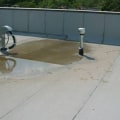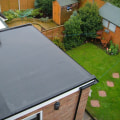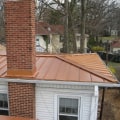Flat roofs require more frequent inspections than sloped roofs due to their susceptibility to water damage and wear. Generally, it is recommended to inspect a flat roof at least twice a year, in the spring and autumn. If there is a storm in the area or trees that could potentially damage the roof, inspections should be done more often. Regular inspections can help identify any underlying problems before they become irreparable.
Professional inspections should be done every two to three years, and more often if there have been past issues. When constructing or replacing a flat roof, it is beneficial to inspect it soon after installation for a “baseline report”. The National Roofing Contractors Association recommends checking the roof twice a year in milder weather to detect any issues. It is also important to check roof drains every spring, summer, and fall. If they are clogged, water cannot drain from the roof and can cause leaks.
The seals around pipes that enter the roof should also be checked as they tend to wear out before the rest of the roof. The materials used for the roof are also essential for its longevity and should be inspected regularly. As a general rule, most roofing professionals suggest inspecting your flat roof at least once every two years. Performing basic visual inspections of flat roofs yourself is an important part of regular building maintenance. The expected lifespan of a flat roof is 20 years or more, which can be shortened without regular inspections.
However, if taken care of properly, they can last longer than the typical 15 years of a flat or low-sloped roof. It is difficult to identify leaks on a flat roof as water can travel a long way underneath the roof material. The frequency of roof inspections will depend on several factors such as the age of the roof, the type of roof material, and the weather conditions in the area. After severe weather events, it is always wise to check for damage on the flat roof. The mild climate makes it easier to inspect the roof and prepare it for upcoming temperature changes and potential seasonal weather hazards. Homeowners should also “stare” at their flat roofs from time to time for signs of damage, especially after storms. To ensure your flat roof remains in good condition for years to come, it is important to inspect it regularly.
While you can do basic visual inspections yourself, it is recommended that you hire a professional every two to three years for an in-depth inspection. This will help you identify any potential problems before they become irreparable.



